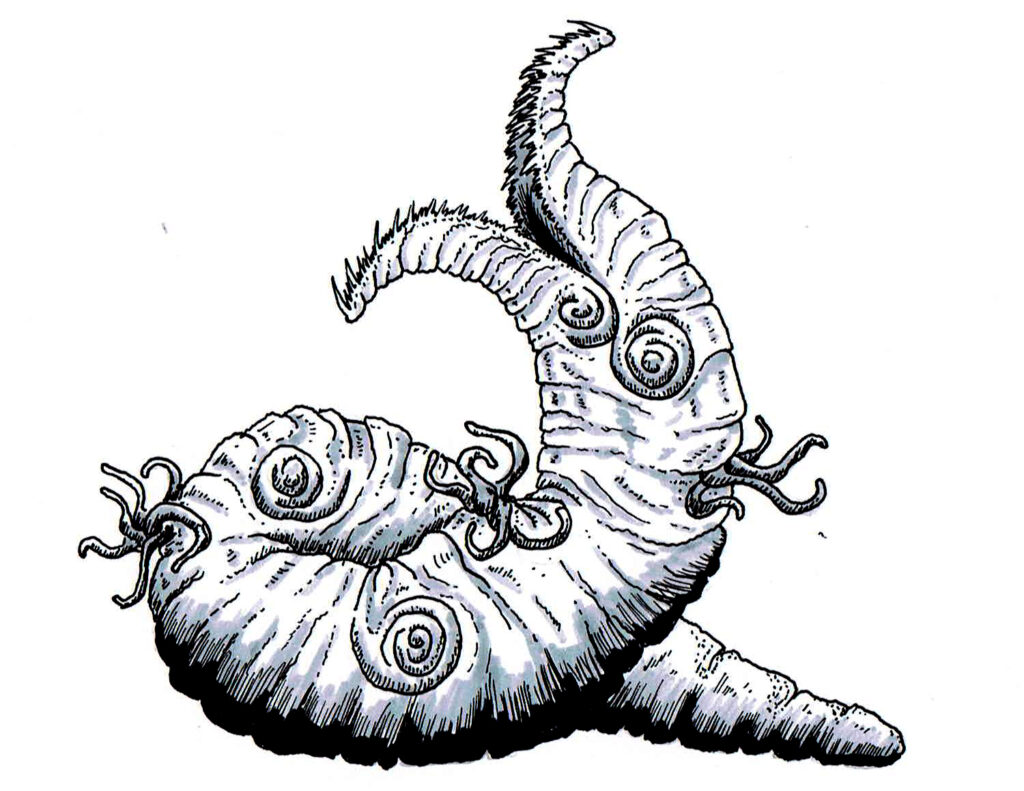
This series of short stories and fix-up novels by Jack Vance spanning the 1950s to 1980s is one of my favorite works of fantasy. It’s about morally gray characters just trying to survive, it’s about a dying world where people still need to get paid, it’s about extra-dimensional demons and fallen angels and tentacle monsters and giant worms.
It’s also where we D&D nerds get a ton of our oldest touchstones like “Vancian” magic.
What’s it about?
The Dying Earth series has several main works, most of which are collections of short stories. The first book, The Dying Earth, introduces half a dozen heroes who wander the land, confront monsters, master arcane magics, and learn about the deep history of their ancient, dying world.

The second and third books, The Eyes of the Overworld and Cugel’s Saga, tell the story of one character, Cugel. Cugel is hard to describe. He’s a thief and liar, he’s a rogue and adventurer. He’s mostly not a nice guy, but he’s a fast talker and also a little stupid, so his adventures are pretty interesting. In short, a wizard banishes Cugel to the north pole and he must make the dangerous journey home on foot to get his revenge. Twice. His travels take him to dead cities, strange villages, wizard mansions, holy temples, giants, cannibals, and magical science fairs.
The fourth book, Rhialto the Marvellous, describes the infighting, backstabbing, and misadventures of a group of powerful wizards who are nominally friends but mostly spend their time gossiping about each other. And gender-shifting. And traveling to the end of the universe.
What’s the big deal?
I love these stories for the sheer amount of imagination and creativity on display. The characters, the locations, the creatures, and the dilemmas are all so bizarre and feel fresh to me. These are story-driven tales, not character studies, and they rush along from weird situation to weird situation, sometimes funny and often surprising.
Recommended?
If you like “classic” scifi and fantasy from the mid-20th century, you’ll probably enjoy the style and substance of these stories. I personally like them quite a bit, even if they are a bit thin on character or plot in some places. As I said, the old-school creativity on display here makes me very happy.
If you play D&D, then I encourage you to read these stories. Many of the concepts and objects in our game come directly from these stories (seriously, Gygax lifted them straight out), including the idea of spell slots, named spells, memorized spells, Ioun stones, and probably tons more I can’t recall right now.
I will note that there is some old-school sexism in some of these stories. Similar perhaps to what you might expect from a Conan the Barbarian tale. The ladies are few, and they are often damsels in distress, etc. I don’t think it is anything terribly terrible, but you may find them underwhelming in that regard.

